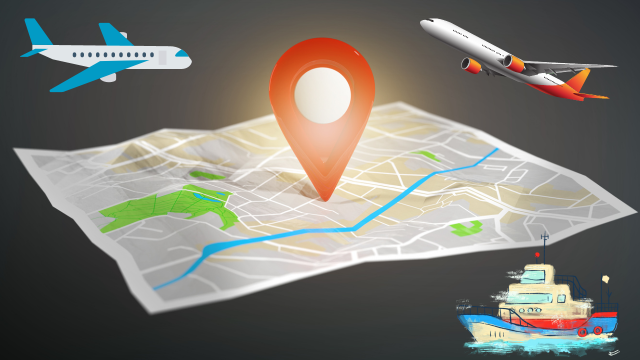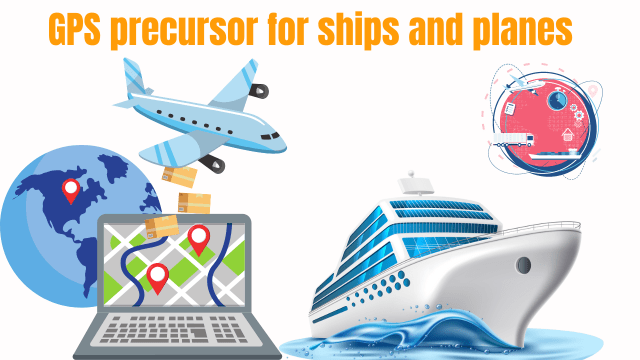In today’s world, ships and planes rely heavily on GPS (Global Positioning System) for navigation. However, before GPS became widely available, precursor systems paved the way for accurate and reliable positioning. This blog post will explore the importance of GPS precursor systems for ships and planes and how they revolutionized navigation. Let’s delve into this fascinating topic.
Importance of Navigation in Maritime and Aviation Industries
Navigation plays a crucial role in both the maritime and aviation industries. Accurate and reliable navigation systems are essential for ensuring ships’ and planes’ safety, efficiency, and success. In this section, we will explore the importance of navigation in these industries and highlight the key reasons why it holds such significance.
1. Safety: a. Avoiding Collisions: Navigation systems enable ships and planes to determine their precise position, track, and heading, thus helping them avoid collisions with other vessels or aircraft. This is particularly vital in congested areas, such as busy shipping lanes or crowded airspace. b. Navigating Hazards: Navigation systems aid in identifying and avoiding navigational hazards, such as reefs, shallow waters, icebergs, or mountainous terrain. They provide critical information to ensure safe passage and prevent accidents.
2. Efficient Route Planning: a. Optimal Course Selection: Navigation systems assist in determining the most efficient and cost-effective routes for ships and planes. Considering weather conditions, currents, traffic, and fuel consumption, these systems help optimize routes, saving time, money, and resources. b. Avoiding Delays: Accurate navigation enables vessels and aircraft to anticipate and navigate around potential delays caused by adverse weather conditions, traffic congestion, or other operational factors. This ensures timely arrivals and departures, reducing disruptions and enhancing overall efficiency.
3. Precision Navigation: a. Precision Landing: In aviation, navigation systems are crucial in precision approaches and landings, especially during low visibility conditions. Instruments like Instrument Landing Systems (ILS) and Global Navigation Satellite Systems (GNSS) guide aircraft safely to the runway with minimal deviation. b. Pinpoint Positioning: Ships and planes rely on navigation systems to determine their exact positions on open waters and in the sky. This precision positioning facilitates accurate tracking and effective course adjustments and enhances situational awareness.
4. Regulatory Compliance: a. International Standards: The maritime and aviation industries adhere to international regulations and standards set by organizations like the International Maritime Organization and the International Civil Aviation Organization (ICAO). Navigation systems help ensure compliance with these regulations, including adherence to specified routes, separation distances, and reporting requirements. b. Safety of Life at Sea (SOLAS): Navigation systems are integral to SOLAS, a treaty that sets minimum safety standards for ships. Compliance with SOLAS regulations is critical to protect lives and property at sea.
5. Emergency Situations: a. Search and Rescue: Accurate navigation systems assist search and rescue operations in locating distressed vessels or aircraft. These systems enable rescuers to determine the last known position and projected course, aiding in efficient and effective search efforts. b. Emergency Landings: In aviation, navigation systems are vital during emergency landings or diversions. They guide pilots to suitable alternate airports or safe landing sites, ensuring the well-being of passengers and crew.
Evolution of Navigation Systems
The evolution of navigation systems has been remarkable, driven by the constant need to determine position accurately, navigate safely, and explore new horizons. This section will delve into the significant milestones and transformations that have shaped navigation systems from ancient celestial navigation to modern satellite-based systems.
Best GPS Fleet Managment System 2023 : See NOW
Early Methods of Navigation: a. Celestial Navigation:
Ancient mariners used celestial bodies, such as the stars, sun, and moon, to navigate their vessels. By observing their positions and movements, sailors could determine their latitude and approximate direction. b. Dead Reckoning: As maritime trade expanded, sailors began using dead reckoning, which estimates position based on previously known positions, course, and speed. While it provided some navigational guidance, it was prone to cumulative errors.
Development of Radio Navigation Systems:
a. LORAN (LOng RAnge Navigation):
In the early 20th century, radio navigation systems emerged as a significant advancement. LORAN used radio signals from land-based transmitters to determine a vessel’s position by measuring the time delay of received signals.
b. Decca Navigator System:
Developed in the 1940s, the Decca Navigator system utilized hyperbolic radio navigation principles. By measuring the phase difference between signals from multiple transmitters, ships could accurately determine their position.
c. Omega Navigation System:
The Omega system was introduced in the 1970s as a global radio navigation system. It employed very-low-frequency (VLF) signals transmitted by a network of ground-based stations, allowing ships and aircraft to determine their position using the phase difference between received signals.
The Role of GPS Precursors:
a. Limitations of Traditional Navigation Systems: While early radio navigation systems were significant advancements, they had limitations such as limited accuracy, susceptibility to atmospheric interference, and restricted coverage areas. b. Introduction to GPS (Global Positioning System): The development of GPS revolutionized navigation. It introduced a network of satellites orbiting the Earth, providing accurate positioning, velocity, and timing information globally.
Transit Satellite Navigation System:
Overview and Development:
The Transit system, developed in the 1960s, was an early satellite-based navigation system. It used a low Earth orbit (LEO) satellite constellation to provide accurate positioning for maritime and aviation applications. b. How Transit System Works: The Transit system relied on Doppler effect measurements of satellite signals received by ships or aircraft. By analyzing the frequency shift, positions could be determined with reasonable accuracy. c. Applications and Advantages: The Transit system enabled more precise navigation, especially in remote areas and over the open ocean. It found applications in maritime navigation, aviation, and scientific research, improving safety and efficiency.
Timation Navigation System:
Origins and Evolution:
The Animation system, developed in the 1960s, was a precursor to GPS. It focused on providing precise timing information for various applications, including navigation. b. Functioning of Timation System: Timation uses atomic clocks on satellites to provide highly accurate time signals. Users could determine their position based on the time delay by receiving and comparing these signals. c. Significance in Navigation: The Animation system was crucial in advancing precise timing applications, essential for synchronization and coordination in navigation systems.
Advancements Leading to GPS:
a. Integration of Transit and Timation Systems: The integration of the Transit and Timation systems laid the foundation for the development of GPS. By combining the strengths of both systems, scientists and engineers achieved significant improvements in accuracy and coverage.
[Image: Insert an image illustrating GPS precursor systems for ships and planes]
Understanding GPS Precursor Systems:
- Loran-C: Long-Range Navigation Loran-C (Long Range Navigation-C) was one of ships and planes’ earliest radio navigation systems. It operated on low-frequency radio signals transmitted by ground-based stations. Loran-C enabled accurate positioning by measuring the time difference between multiple signal receptions, offering reliable navigation over long distances.
- Decca Navigator System: The Decca Navigator System, developed in the 1940s, provided precise positioning for ships and planes. It utilized hyperbolic navigation principles, employing a network of land-based transmitting stations to calculate position based on the time difference of received signals. The Decca Navigator System greatly improved navigation accuracy and played a crucial role in maritime and aviation industries.
- Omega Navigation System: Omega was another notable precursor contributing to navigation advancements. Introduced in the 1970s, this worldwide radio navigation system utilized low-frequency signals transmitted from multiple ground-based stations. Ships and planes could determine their position by measuring the phase difference between the received signals, allowing them to navigate more precisely.
The Evolution of GPS: As technology progressed, the need for a more advanced and global navigation system emerged. The Global Positioning System, commonly known as GPS, was developed by the United States Department of Defense and made available for civilian use in the 1980s. GPS revolutionized navigation for ships and planes, offering accurate positioning, precise timing, and global coverage.
FAQs:
Q1: Were these precursor systems as accurate as GPS?
A1: While precursor systems like Loran-C, Decca, and Omega significantly improved navigation accuracy, GPS could have been more precise and reliable. GPS utilizes satellite-based positioning, providing unparalleled accuracy and global coverage.
Q2: Are any of the precursor systems still in use today?
A2: With the widespread adoption of GPS, most precursor systems have become obsolete. However, some enthusiasts and historical preservation organizations may still operate and maintain these systems for education and nostalgia.
Conclusion:
GPS precursor systems were vital in developing modern navigation for ships and planes. Loran-C, Decca, and Omega served as stepping stones, offering increased accuracy and reliability compared to their predecessors. The advent of GPS marked a significant milestone, revolutionizing navigation with its unparalleled precision and global coverage. As we continue to rely on GPS for precise positioning, it is essential to acknowledge and appreciate the contributions of these precursor systems in shaping the way we navigate the seas and skies today.

We hope you enjoyed this exploration of GPS precursor systems for ships and planes. If you have any further questions or want to share your thoughts, please comment below. Happy navigating!
GPS location tracker: See NOW

